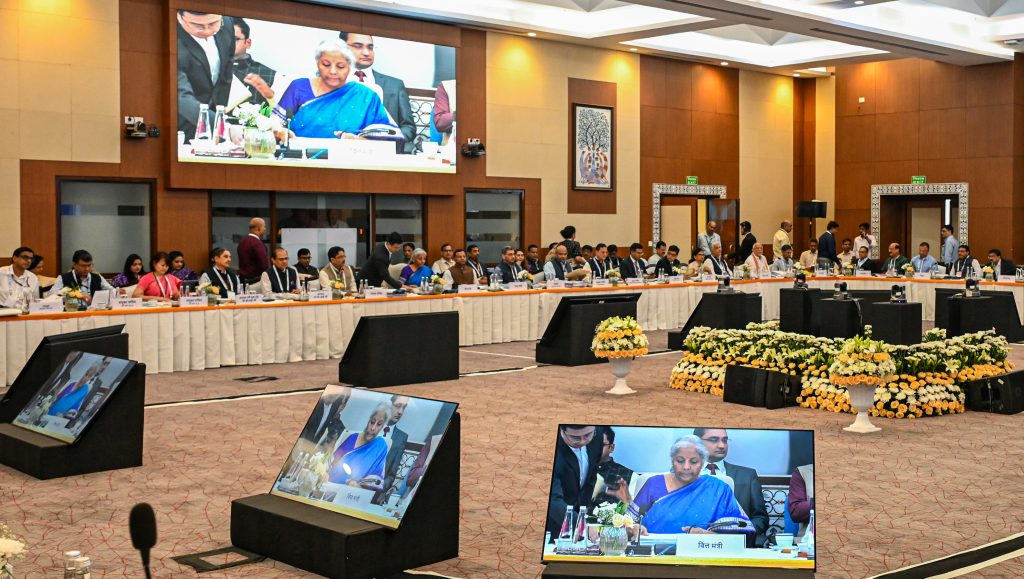GST Council Meet: States To Remain Net Gainers Despite Rate Rejig, Say Experts
While some states raised concerns over possible revenue loss at the 56th meeting of the GST Council on Wednesday, fresh estimates suggest that states will remain net gainers under the GST framework, even after a potential rationalisation of tax rates.
According to an SBI Research report, states are projected to receive at least ₹10 lakh crore in State GST (SGST) collections in FY26, in addition to ₹4.1 lakh crore through tax devolution from the Centre.
This optimism is rooted in the unique revenue-sharing structure of GST, under which 50 per cent of all GST collections go directly to the states, while 41 per cent of the Centre’s share is also devolved. In effect, out of every ₹100 collected through GST, states accrue around ₹70.5, giving them a substantial portion of the overall tax pool.
Experts argue that even if rate changes cause short-term revenue dips, the long-term benefits — driven by higher consumption and improved compliance — will outweigh temporary losses.
The debate has intensified as eight opposition-ruled states — Himachal Pradesh, Jharkhand, Kerala, Punjab, Tamil Nadu, Telangana, West Bengal, and Karnataka — have formally sought compensation from the Union government, citing fears of reduced revenue inflows from rationalisation.
However, historical trends appear to favour rate changes. The SBI report highlights the revisions in 2018 and 2019, which initially caused a marginal decline in collections but were followed by steady revenue growth of 5–6 per cent month-on-month.
Even if there is a short-lived dip of 3–4 per cent in monthly GST collections (around ₹5,000 crore), the report projects a quick recovery supported by rising consumption.
As the Council continues its deliberations over the next two days, both industry and consumers are closely watching for announcements. If approved, rationalisation could lower prices of daily essentials as well as premium goods, providing relief to households and boosting consumption-led growth.










